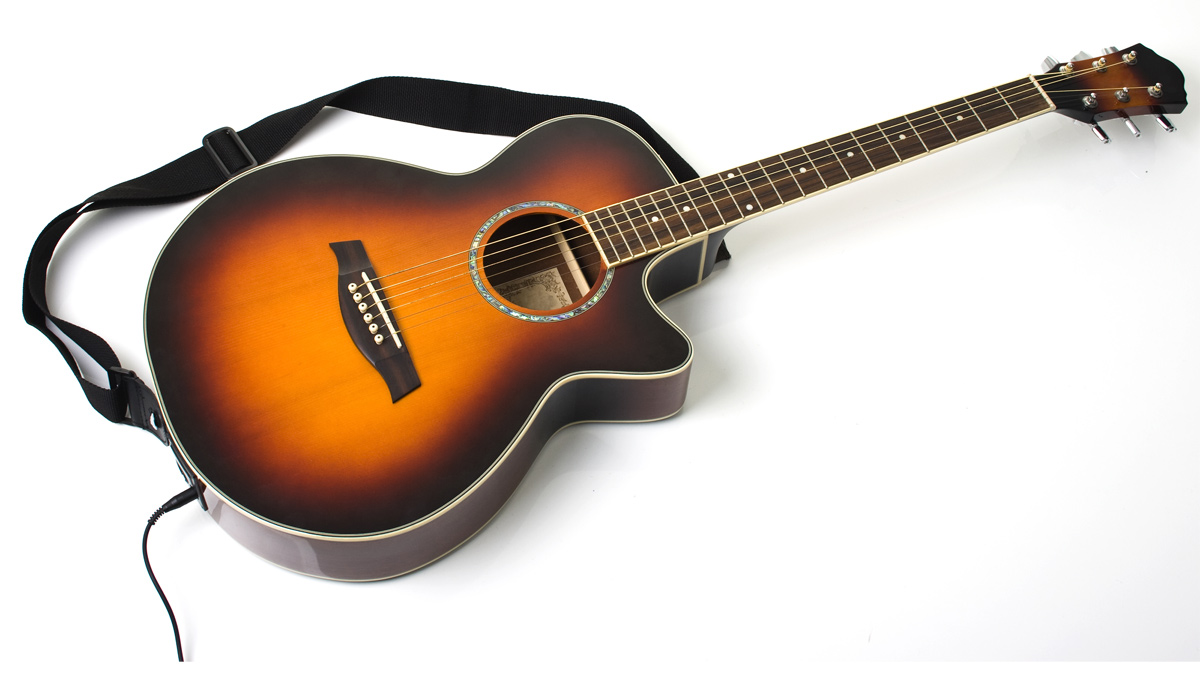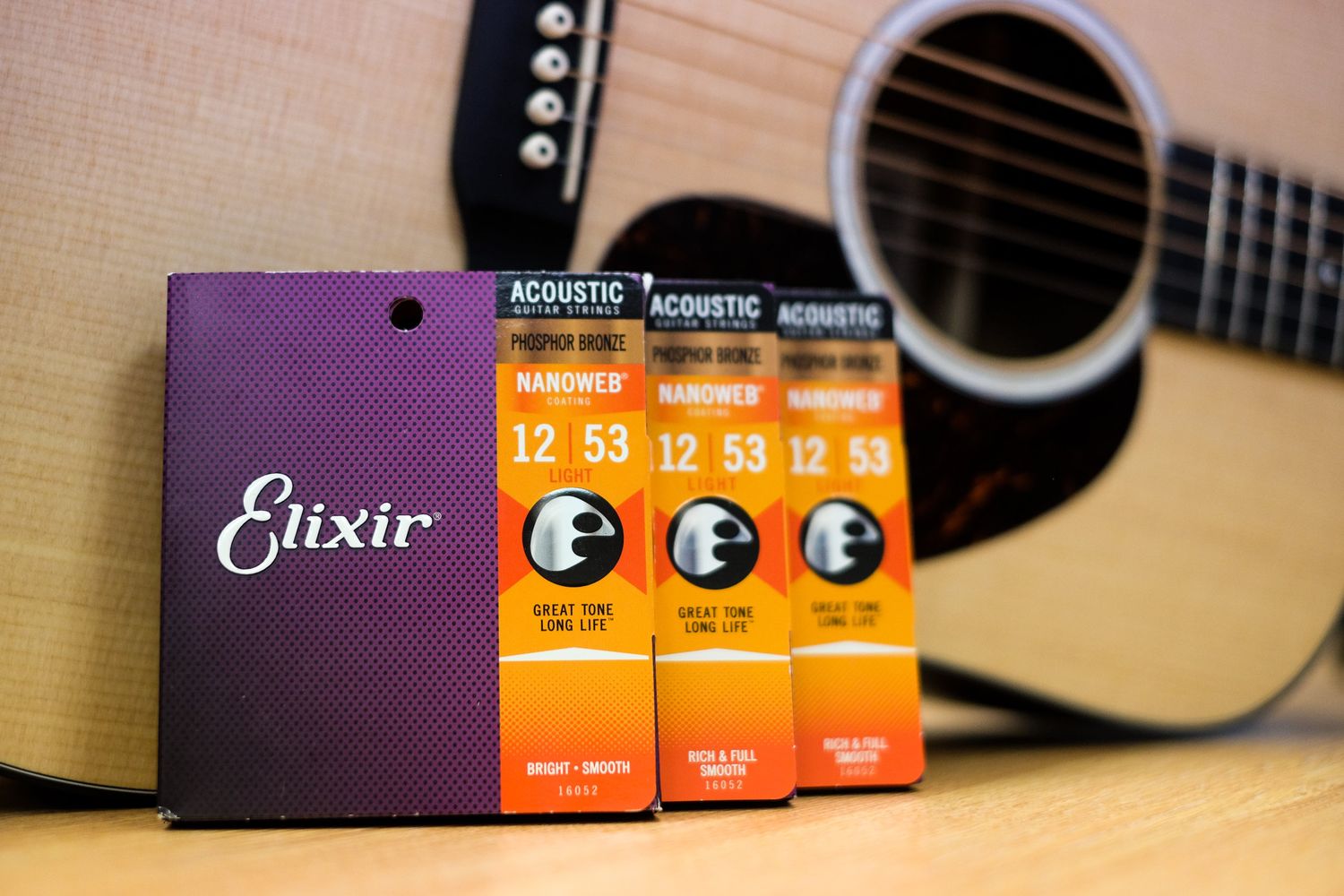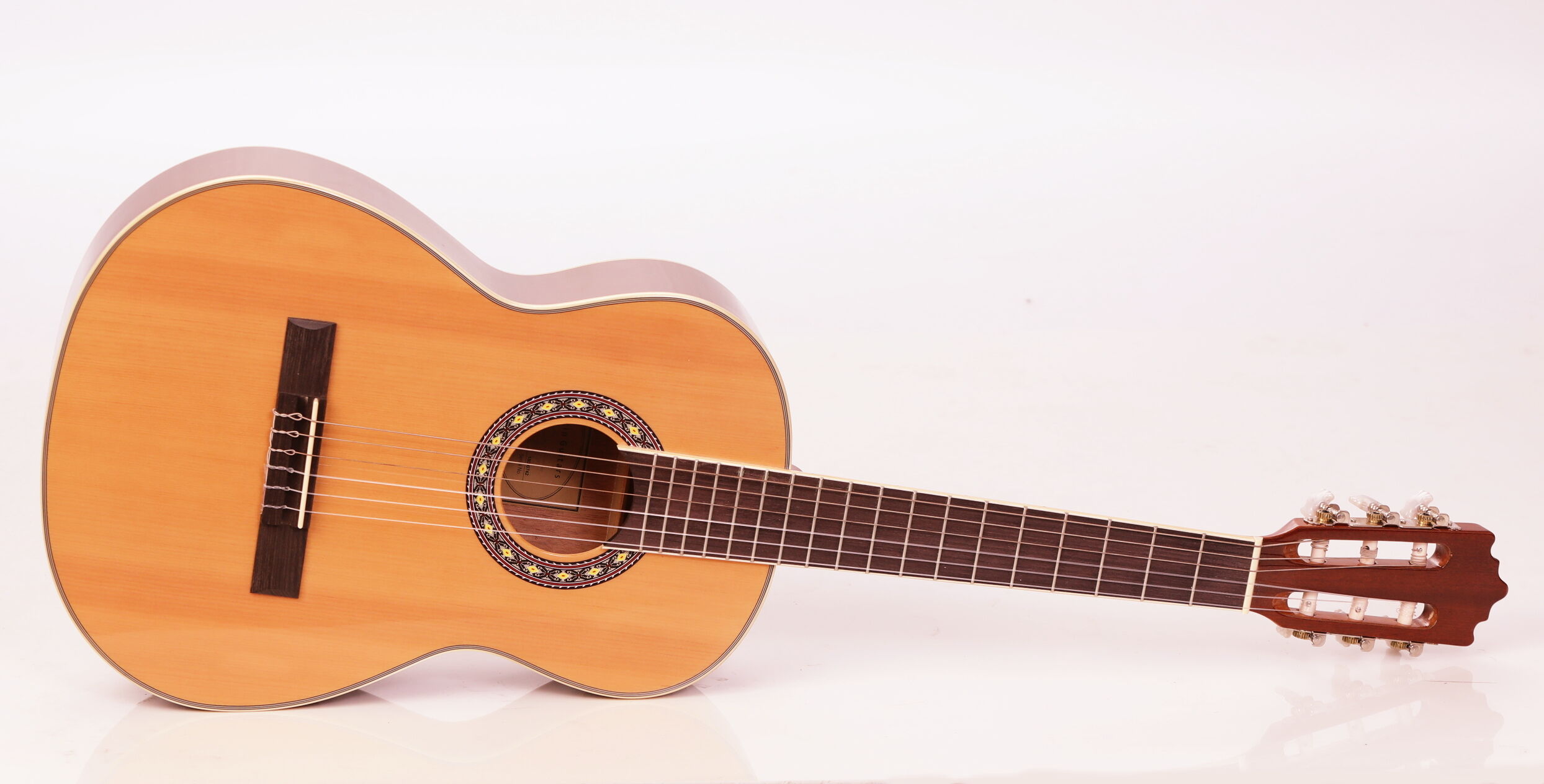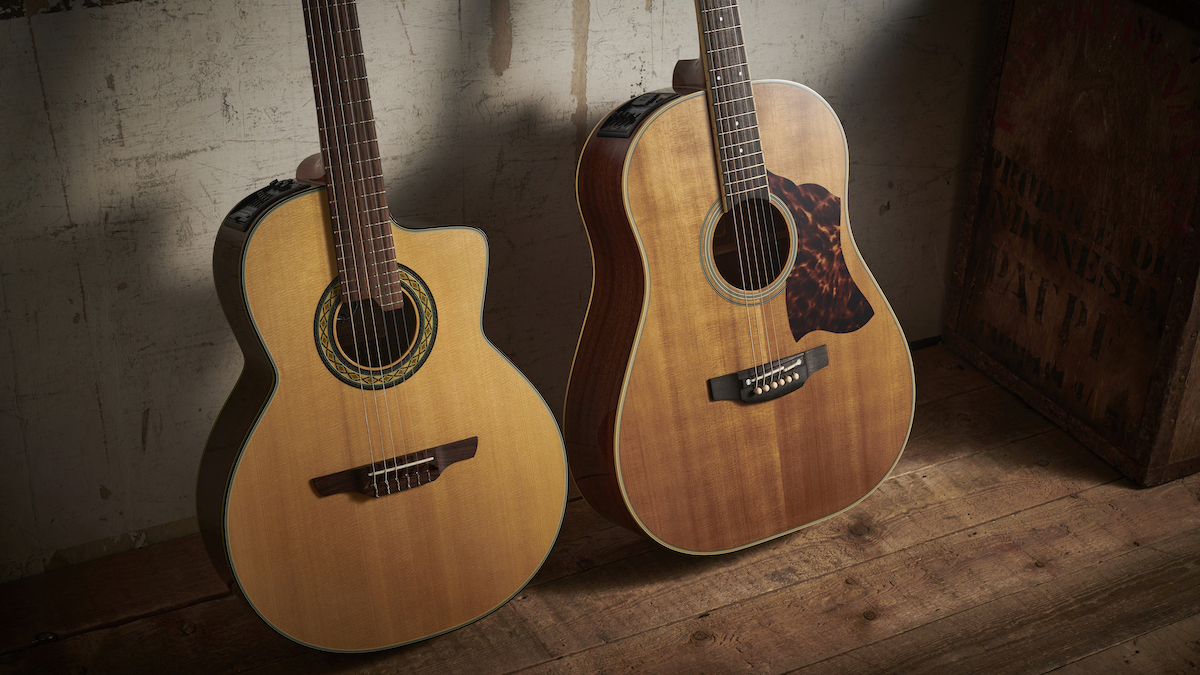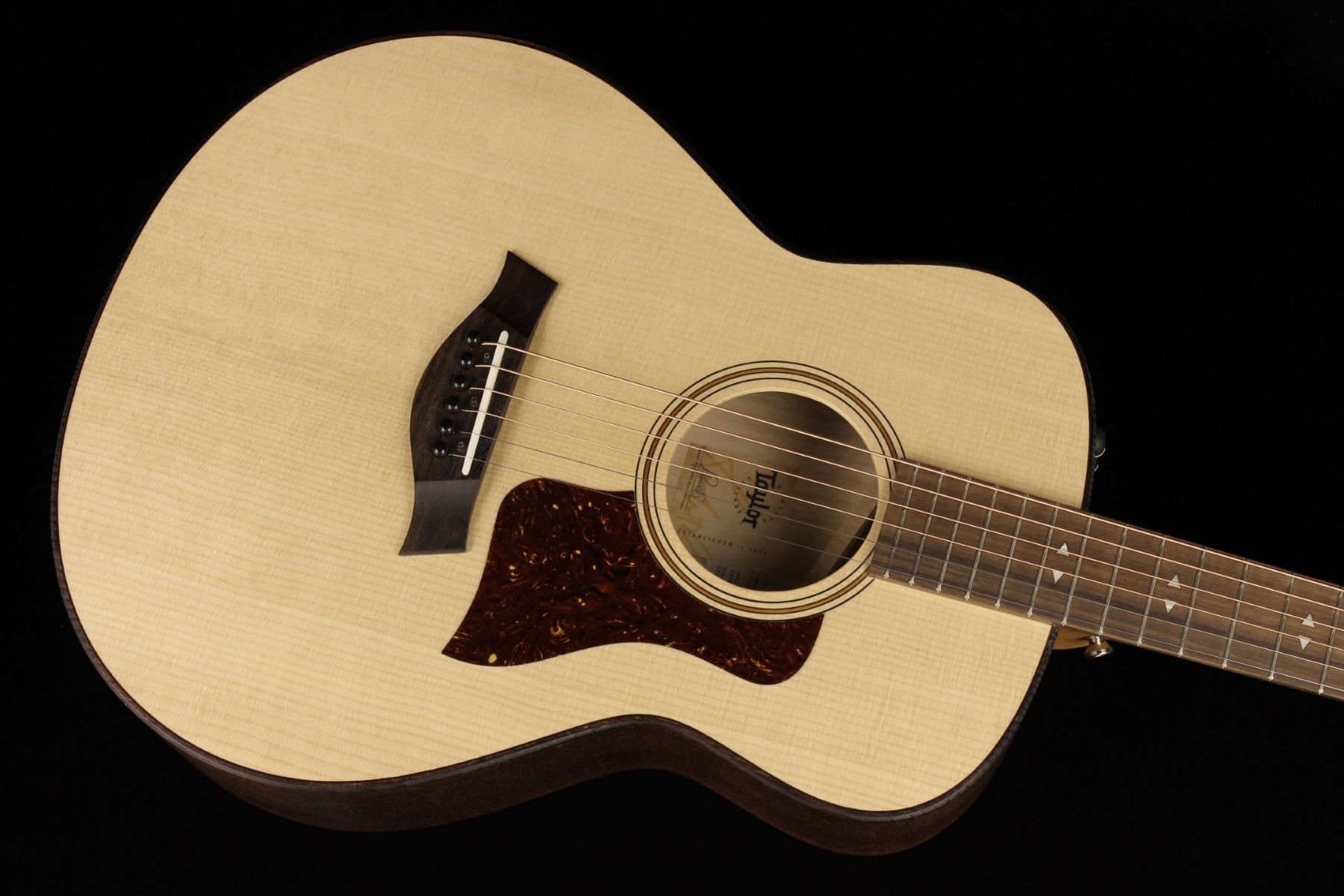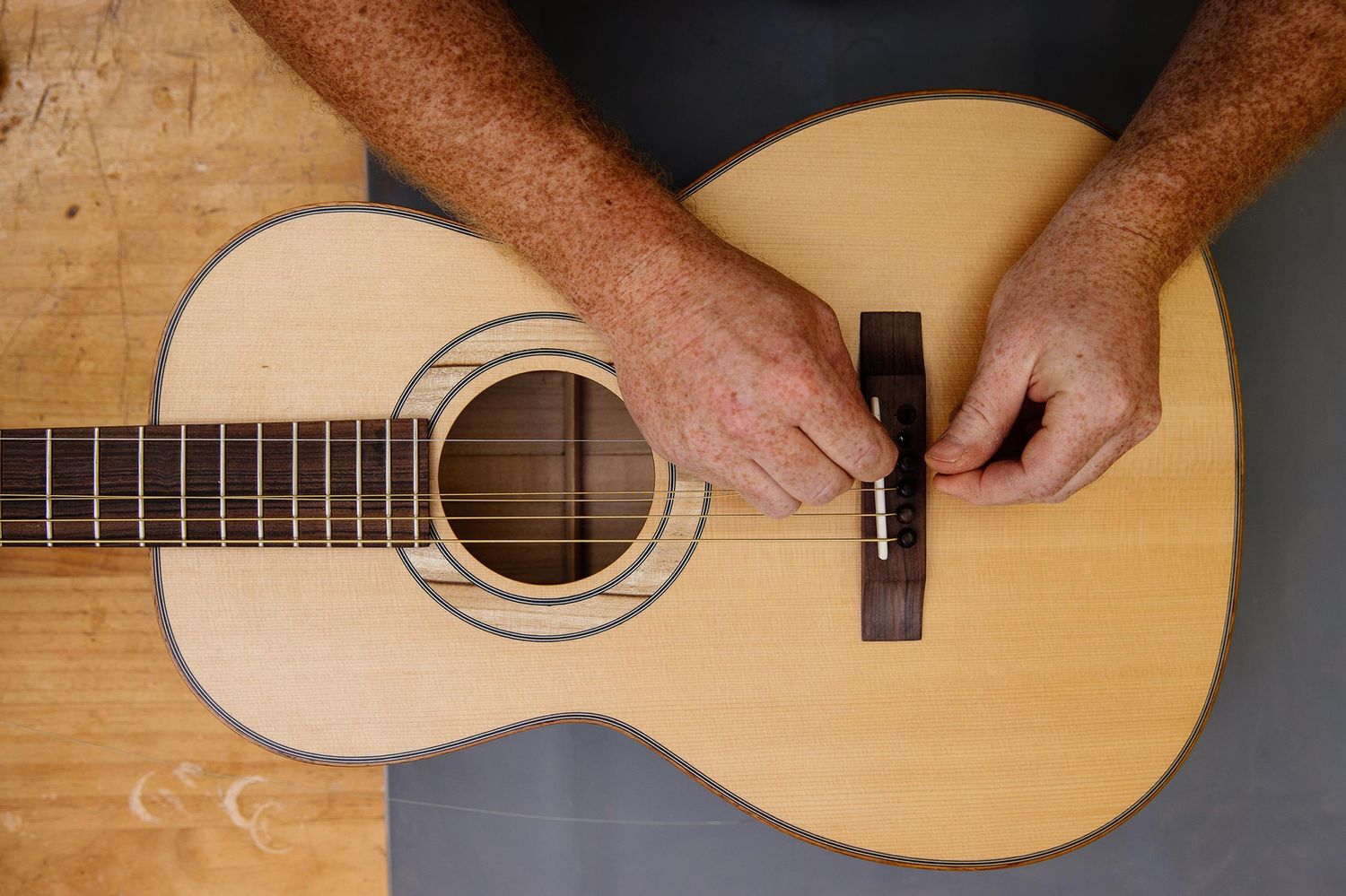Home>Production & Technology>Acoustic>What Is A DI Box For Acoustic Guitar


Acoustic
What Is A DI Box For Acoustic Guitar
Published: March 11, 2024
Learn how a DI box can enhance the sound of your acoustic guitar. Discover the benefits and uses of using a DI box for acoustic instruments.
(Many of the links in this article redirect to a specific reviewed product. Your purchase of these products through affiliate links helps to generate commission for AudioLover.com, at no extra cost. Learn more)
Table of Contents
Introduction
When it comes to amplifying acoustic guitars, achieving the perfect sound can be a challenging endeavor. The delicate nuances and rich tones of an acoustic guitar can easily get lost in translation when connected to sound systems or recording equipment. This is where a DI box comes into play. DI, which stands for "direct injection" or "direct input," is a crucial tool for musicians and sound engineers alike. It serves as a bridge between the acoustic guitar and the audio system, ensuring that the instrument's natural sound is faithfully reproduced.
In the world of music, the acoustic guitar holds a special place. Its warm, resonant tones have the power to captivate audiences and add depth to any musical composition. However, when it comes to live performances or studio recordings, capturing the true essence of an acoustic guitar can be a complex task. This is where the DI box steps in, offering a solution that enhances the instrument's sonic qualities and ensures that its unique character shines through.
In the following sections, we will delve into the intricacies of DI boxes, exploring their purpose, benefits, types, and how they can be effectively utilized with acoustic guitars. Whether you're a seasoned musician, a budding performer, or a curious enthusiast, understanding the role of a DI box in the realm of acoustic guitars can elevate your appreciation for the instrument and empower you to achieve exceptional sound quality in various musical settings.
What Is a DI Box?
A DI box, short for "direct injection" or "direct input" box, is an essential tool in the realm of audio engineering and live sound reinforcement. It serves as a crucial intermediary device that facilitates the connection between high-impedance, unbalanced audio signals from instruments such as acoustic guitars and the low-impedance, balanced inputs of audio equipment, including mixers, amplifiers, and recording interfaces.
At its core, a DI box functions as a signal converter, transforming the unbalanced, high-impedance output of an instrument into a balanced, low-impedance signal that is compatible with professional audio systems. This conversion process is vital for preserving the integrity of the audio signal and minimizing interference and noise, thereby ensuring optimal sound quality.
The primary purpose of a DI box is to address the impedance and signal level disparities that often arise when connecting instruments, particularly acoustic guitars, to audio systems. Without a DI box, the inherent characteristics of an acoustic guitar's sound, including its rich harmonics and dynamic range, may be compromised when transmitted through lengthy cables or interfaced with different audio devices.
In addition to impedance matching and signal conversion, DI boxes also serve as effective noise filters, shielding the audio signal from electromagnetic interference and ground loop hum. This is especially beneficial in live performance scenarios where external factors, such as stage lighting and power sources, can introduce unwanted noise into the audio signal chain.
Furthermore, DI boxes often feature additional functionalities such as ground lift switches, which help eliminate ground loop issues, and pad switches, which attenuate excessively hot signals to prevent overloading the input of the connected audio equipment.
In essence, a DI box acts as a sonic safeguard, preserving the natural tonal characteristics of acoustic guitars and other instruments while ensuring seamless integration with professional audio systems. Its role in mitigating signal impedance disparities and minimizing extraneous noise makes it an indispensable asset for musicians, sound engineers, and audio technicians seeking to achieve pristine sound quality in a variety of musical environments.
Why Use a DI Box for Acoustic Guitar?
The utilization of a DI box for acoustic guitars is pivotal in ensuring optimal sound quality and seamless integration with audio systems. Acoustic guitars, renowned for their rich tonal complexities and dynamic range, demand special attention when it comes to signal processing and transmission. Here are several compelling reasons why employing a DI box is essential for acoustic guitar applications:
-
Impedance Matching: Acoustic guitars typically output high-impedance, unbalanced signals, which are susceptible to degradation and signal loss when connected directly to audio systems with low-impedance, balanced inputs. A DI box resolves this impedance disparity by converting the high-impedance signal into a low-impedance, balanced signal, ensuring efficient signal transfer without compromising the instrument's sonic integrity.
-
Signal Preservation: The intricate harmonics and tonal nuances of acoustic guitars can be compromised when transmitted over long cable runs or interfaced with various audio devices. A DI box acts as a sonic guardian, preserving the natural characteristics of the instrument's sound and safeguarding it against signal degradation, thereby maintaining its authentic tonal qualities.
-
Noise Reduction: External electromagnetic interference and ground loop hum can infiltrate the audio signal chain, leading to unwanted noise and distortion. A DI box serves as an effective noise filter, shielding the acoustic guitar's signal from external interference and ensuring a clean, noise-free audio output, particularly in live performance settings where environmental factors can impact signal quality.
-
Versatile Connectivity: DI boxes offer versatile connectivity options, allowing acoustic guitars to be seamlessly integrated into a wide range of audio systems, including mixers, amplifiers, and recording interfaces. This versatility enables musicians and sound engineers to adapt to diverse performance and recording environments without compromising sound quality or signal integrity.
-
Additional Functionality: Many DI boxes feature built-in functionalities such as ground lift switches and pad switches, which further enhance their utility. The ground lift switch helps eliminate ground loop issues, while the pad switch attenuates excessively hot signals, providing flexibility and ensuring compatibility with a variety of audio equipment.
In essence, the utilization of a DI box for acoustic guitars is indispensable for overcoming impedance challenges, preserving the instrument's sonic characteristics, minimizing noise interference, and facilitating seamless integration with professional audio systems. Whether in live performances, studio recordings, or rehearsal settings, the incorporation of a DI box ensures that the true essence of the acoustic guitar is faithfully conveyed, enriching the musical experience for both performers and audiences alike.
Types of DI Boxes
DI boxes come in various types, each designed to cater to specific audio requirements and performance scenarios. Understanding the different types of DI boxes can empower musicians and audio professionals to make informed decisions when selecting the most suitable DI box for their acoustic guitar applications. Here are the primary types of DI boxes:
Passive DI Boxes
Passive DI boxes are renowned for their simplicity and reliability. They operate without the need for external power and are ideal for handling high-impedance, unbalanced signals from acoustic guitars. Passive DI boxes utilize transformers to perform the crucial task of impedance conversion and signal balancing. Their straightforward design and robust construction make them well-suited for live performances and studio recordings where a dependable, no-frills DI solution is required.
Active DI Boxes
Active DI boxes, in contrast to passive ones, incorporate electronic circuitry and require external power, typically from batteries or phantom power sources. These DI boxes are equipped with preamplifiers, which enable them to handle both high-impedance and low-impedance signals. Active DI boxes are favored for their ability to provide additional gain and signal buffering, making them suitable for scenarios where long cable runs or complex signal routing is involved. Their versatility and ability to accommodate a wide range of audio signals make them valuable assets in diverse musical environments.
Stereo DI Boxes
Stereo DI boxes are specifically designed to process and transmit stereo audio signals, making them ideal for acoustic guitars equipped with onboard stereo pickup systems or dual-channel preamps. These DI boxes feature dual input channels and are equipped to preserve the spatial and tonal intricacies of stereo sound, ensuring that the acoustic guitar's stereo output is faithfully reproduced without compromise. Stereo DI boxes are invaluable for enhancing the sonic dimension and depth of acoustic guitar performances in both live and studio settings.
Multi-Channel DI Boxes
For musicians and audio engineers dealing with complex audio setups and multiple instrument sources, multi-channel DI boxes offer a comprehensive solution. These DI boxes feature multiple input channels, allowing for the simultaneous connection and processing of multiple instruments, including acoustic guitars, keyboards, and other acoustic or electronic instruments. Multi-channel DI boxes streamline signal management and routing, making them indispensable in scenarios where efficient signal distribution and management are paramount.
Tube DI Boxes
Tube DI boxes, also known as valve DI boxes, integrate vacuum tube technology into the signal processing chain. These DI boxes impart a warm, vintage character to the audio signal, enhancing the harmonic richness and tonal depth of acoustic guitars. Tube DI boxes are prized for their ability to add a touch of analog warmth and musicality to the instrument's sound, making them sought-after tools for musicians and recording engineers seeking to infuse a classic, vintage vibe into their acoustic guitar recordings.
In summary, the diverse array of DI box types caters to a wide spectrum of audio applications, from basic impedance matching to complex stereo signal processing. By understanding the unique characteristics and capabilities of each type, musicians and audio professionals can make informed choices that align with their specific acoustic guitar requirements, ultimately enhancing the sonic quality and expressive potential of the instrument in various musical contexts.
How to Use a DI Box with Acoustic Guitar
Using a DI box with an acoustic guitar involves a series of straightforward yet crucial steps that are essential for optimizing sound quality and ensuring seamless integration with audio systems. Whether in a live performance setting, a recording studio, or a rehearsal space, the proper utilization of a DI box can significantly enhance the sonic characteristics and expressive potential of the acoustic guitar. Here's a comprehensive guide on how to effectively use a DI box with an acoustic guitar:
-
Connectivity: Begin by identifying the appropriate input and output connections on the DI box. Most DI boxes feature a high-impedance input for connecting the acoustic guitar and a balanced, low-impedance output for interfacing with audio equipment. Ensure that the connections are secure and that the cables are of high quality to minimize signal loss and interference.
-
Impedance Matching: The high-impedance input of the DI box is designed to accommodate the unbalanced output of the acoustic guitar. By connecting the guitar to the DI box, the impedance disparity is effectively addressed, allowing for efficient signal transfer without compromising the instrument's sonic integrity.
-
Ground Lift: If encountering ground loop issues or unwanted hum in the audio signal, engage the ground lift switch on the DI box to isolate the ground connection and eliminate potential grounding problems. This simple yet effective feature can significantly improve the overall sound quality and reduce extraneous noise.
-
Signal Routing: Once the acoustic guitar is connected to the DI box, route the balanced output of the DI box to the desired audio equipment, such as a mixer, amplifier, or recording interface. Ensure that the signal path is free from obstructions and that the cables are neatly organized to prevent accidental disconnection or signal interference.
-
Level Adjustment: Some DI boxes are equipped with pad switches or level controls to adjust the signal level before it reaches the connected audio equipment. This feature is particularly useful for attenuating excessively hot signals and preventing input overload, ensuring a balanced and distortion-free audio output.
-
Monitoring and Testing: Before engaging in a performance or recording session, monitor the audio signal from the DI box to verify that the acoustic guitar's sound is accurately conveyed without any unwanted noise or distortion. Conduct sound checks and tests to ensure that the DI box is effectively preserving the instrument's tonal characteristics and delivering a clean, balanced signal to the audio system.
By following these steps and understanding the fundamental principles of DI box usage, musicians and audio professionals can harness the full potential of the acoustic guitar's sound while leveraging the capabilities of a DI box to achieve pristine sound quality and seamless audio integration in various musical environments.
Conclusion
In conclusion, the DI box stands as a pivotal tool in the realm of acoustic guitar amplification and audio signal processing. Its role in addressing impedance disparities, preserving the natural tonal characteristics of acoustic guitars, and minimizing noise interference is indispensable for musicians, sound engineers, and audio technicians seeking to achieve exceptional sound quality in live performances, studio recordings, and rehearsal settings.
The utilization of a DI box for acoustic guitars offers a myriad of benefits, including impedance matching, signal preservation, noise reduction, versatile connectivity, and additional functionalities such as ground lift and pad switches. These advantages collectively contribute to the faithful reproduction of the acoustic guitar's rich harmonics, dynamic range, and tonal nuances, ensuring that its unique sonic qualities are faithfully conveyed to audiences and listeners.
Furthermore, the diverse array of DI box types, including passive, active, stereo, multi-channel, and tube DI boxes, caters to a wide spectrum of audio applications, providing musicians and audio professionals with tailored solutions to meet their specific acoustic guitar requirements. Understanding the unique characteristics and capabilities of each type empowers individuals to make informed choices that align with their performance and recording needs, ultimately enhancing the sonic quality and expressive potential of the acoustic guitar in various musical contexts.
The comprehensive guide on how to effectively use a DI box with an acoustic guitar underscores the importance of proper connectivity, impedance matching, ground lift engagement, signal routing, level adjustment, and thorough monitoring and testing. By following these essential steps, musicians and audio professionals can harness the full potential of the acoustic guitar's sound while leveraging the capabilities of a DI box to achieve pristine sound quality and seamless audio integration in diverse musical environments.
In essence, the DI box serves as a sonic safeguard, ensuring that the true essence of the acoustic guitar is faithfully conveyed, enriching the musical experience for both performers and audiences alike. Its ability to bridge the gap between the acoustic guitar and professional audio systems, while preserving the instrument's sonic integrity, solidifies its status as an indispensable asset in the pursuit of sonic excellence and musical artistry.

